I'll break this up into two categories: acoustic and electric.
For years I followed developments in Kasha radial bracing, since reading about a guitar that Steve Klein made for Joni Mitchell. (1979?) The article - and especially the detailed photos - didn't make it to the internet, so there are only grainy shots here and there.

That's Steve's interpretation of Kasha's theories, in particular the flying scalloped brace on the treble side (one end is attached to the tailblock), which is usually any number of short braces placed in a radiating pattern around the bridge. (Here's Richard Schneider's interpretation. Dig the nifty flying brace arching OVER the bass bar):
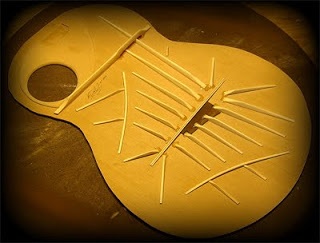
Steve inlaid an absolutely accurate, detailed star map on the fingerboard, made from precious metals and gems, and pasted an astronomical photo of that section of sky (and instructions for locating it) off to one side of the guitar, so you can hold it up and (with a flashlight) compare the inlays with the real thing.
The edge of the photo is faintly visible through the soundhole, in this awful photo.
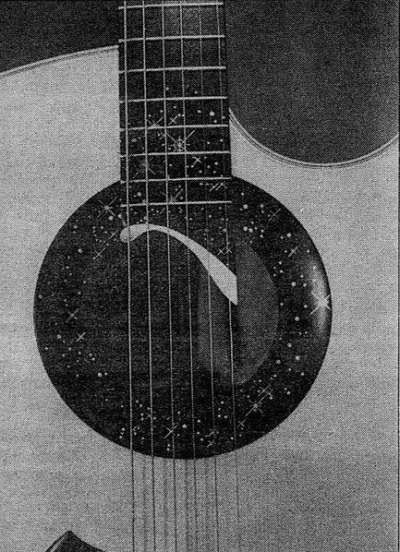
The headstock plaque (of pre-ban ivory that Steve got from John D'Angelico) is in reference to Joni's album Don Juan's Reckless Daughter, her most experimental Jazz album, featuring Jaco and all the members of Weather Report, a forty piece orchestra (and a bunch of Guatamalan Insanity Pepper sessions, I imagine).
http://youtu.be/Mdfk17EKGa0 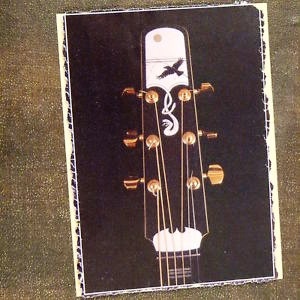
I wrote an article about guitar history and modern luthiers for a magazine, and in the process I interviewed Steve Klein. Joni's guitar happened to be there for service (I honestly don't know what that entailed) but I got to play it, along with twenty or so of the instruments he had laying around. (More on that later.)
Here's an interesting tidbit you won't find anywhere else: his mother was a librarian, and Steve was an only child. Every day when he got home from school, there was a note on the fridge from his mother listing chores, shopping lists etc., with the items grouped by {brackets}.
Steve really likes {brackets}. See how many you can spot.
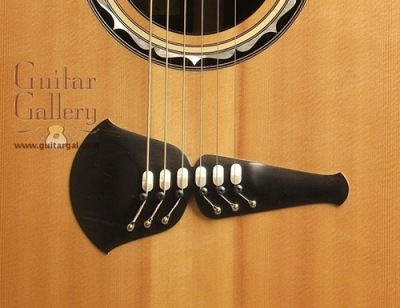
Here is a brilliant article about Kasha bracing (and its failings) by William Cumpiano, author of Guitarmaking: Tradition and Technology, one of the best books (and schools) about wood and wire:
http://dolcecano.blogspot.com/2011_04_01_archive.html#8591961888773614586 More recently, Cumpiano captured my sentiments (underwhelmed) about Kasha-braced guitars;
---------------------------------------------------------
I'm not an advocate of the Kasha system, so I'm not the best source of detailed information on it. Michael Kasha has been extolling the system's virtues for over a decade, and through a handful of zealous advocates has been trying to mainstream the system. It just hasn't caught on. ...
... He's gotten a lot of enthusiastic press and lot of earnest and proselyte followers, but it just has not caught on. The ear is the final arbiter, and it apparently just does not meet up to that final test. Let alone that it is far, far more complex than standard systems without the obvious increment in sound quality that would justify it.
Now if you're interested in a radical cutting edge system, take a look at the lattice bracing system, as introduced by the Australian luthier GREG SMALLMAN. [see below]
Now there's a noticeable and dramatic improvement in power with only a modest increment in complexity. I'm experimenting now with transferring the system to steel string tensions. Stay tuned. As for Kasha, I don't know: if you're impressed, follow it to where it will take you. But I am not.
---------------------------------------------------------
Please take a moment to watch this video of the legendary English classical guitarist John Williams visiting with Greg Smallman (mentioned by Cumpiano, above) at his shop in Australia.
As Williams mentions, he had been playing a Smallman guitar for about a decade at that point with no idea why it sounded so incredible. The brief shot of Smallman's lattice system in this video is the lone explanation I could find anywhere.
http://youtu.be/tCtalGJcP8A A similar idea that's arisen lately is what are called double tops or hollow tops. Made by compositing ultra-thin wood soundboards with a honeycomb lattice made of a fireproof material called Nomex. (Firefighters wear protective outerwear made of Nomex.)
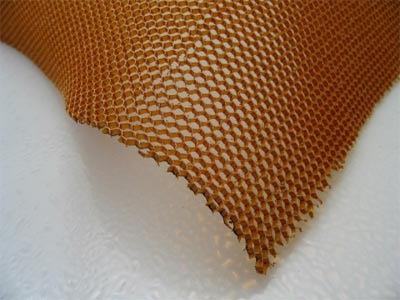
Here is the Luthier's Mercantile page about Nomex, with two excellent, brief videos about its use.
http://www.lmii.com/products/mostly-wood/tops-tonewood/nomex William Cumpiano has some definite opinions. Here's one of my favorites:
http://dolcecano.blogspot.com/2010_01_01_archive.html#8741215902571577177 I'd like for this to be the start of a conversation about innovations in acoustic instruments, so everybody pile in. You never know where the next great idea will come from.
Next up: Larry Fishman has reinvented pickups. Wait 'till you see THIS.